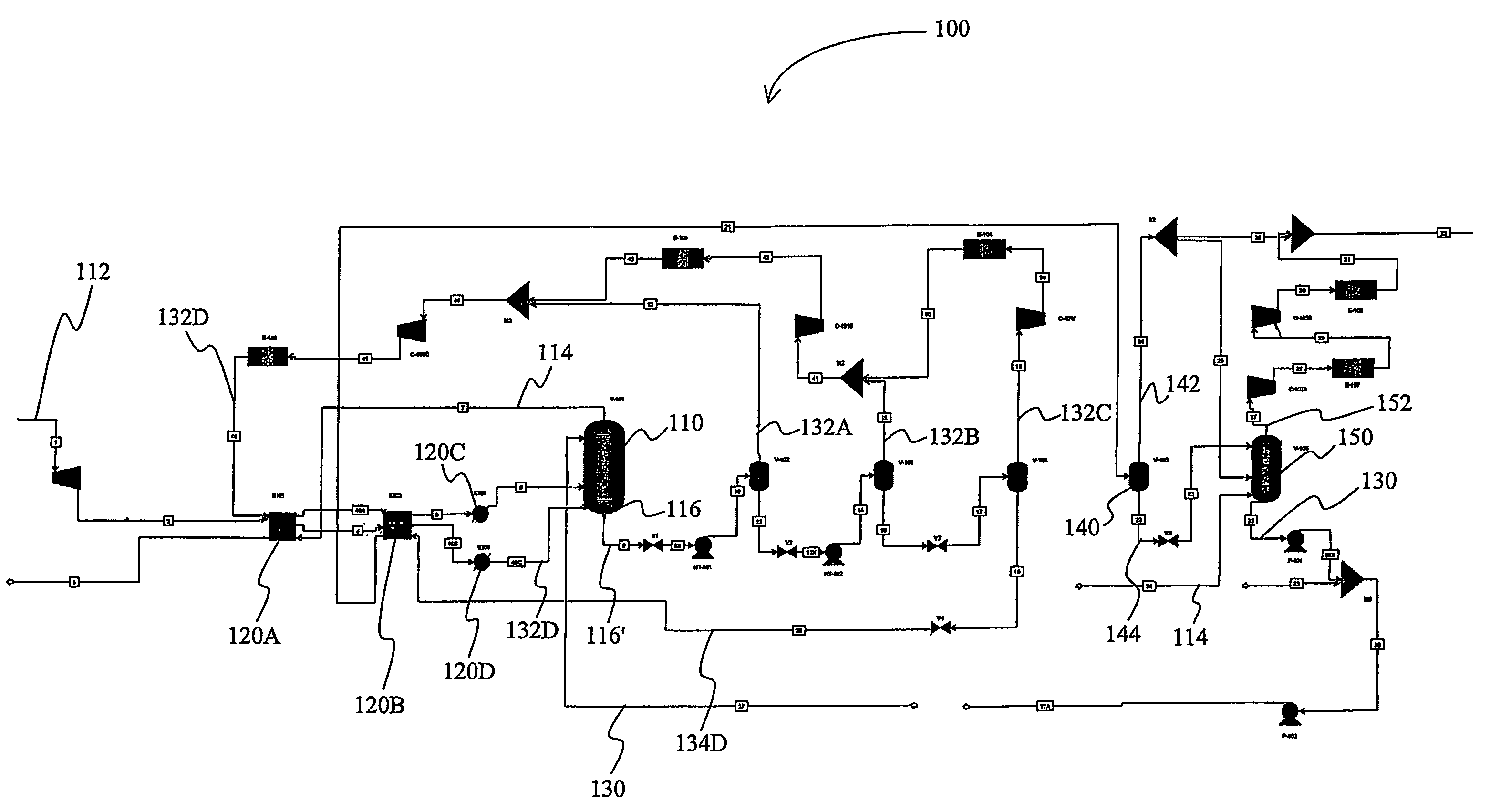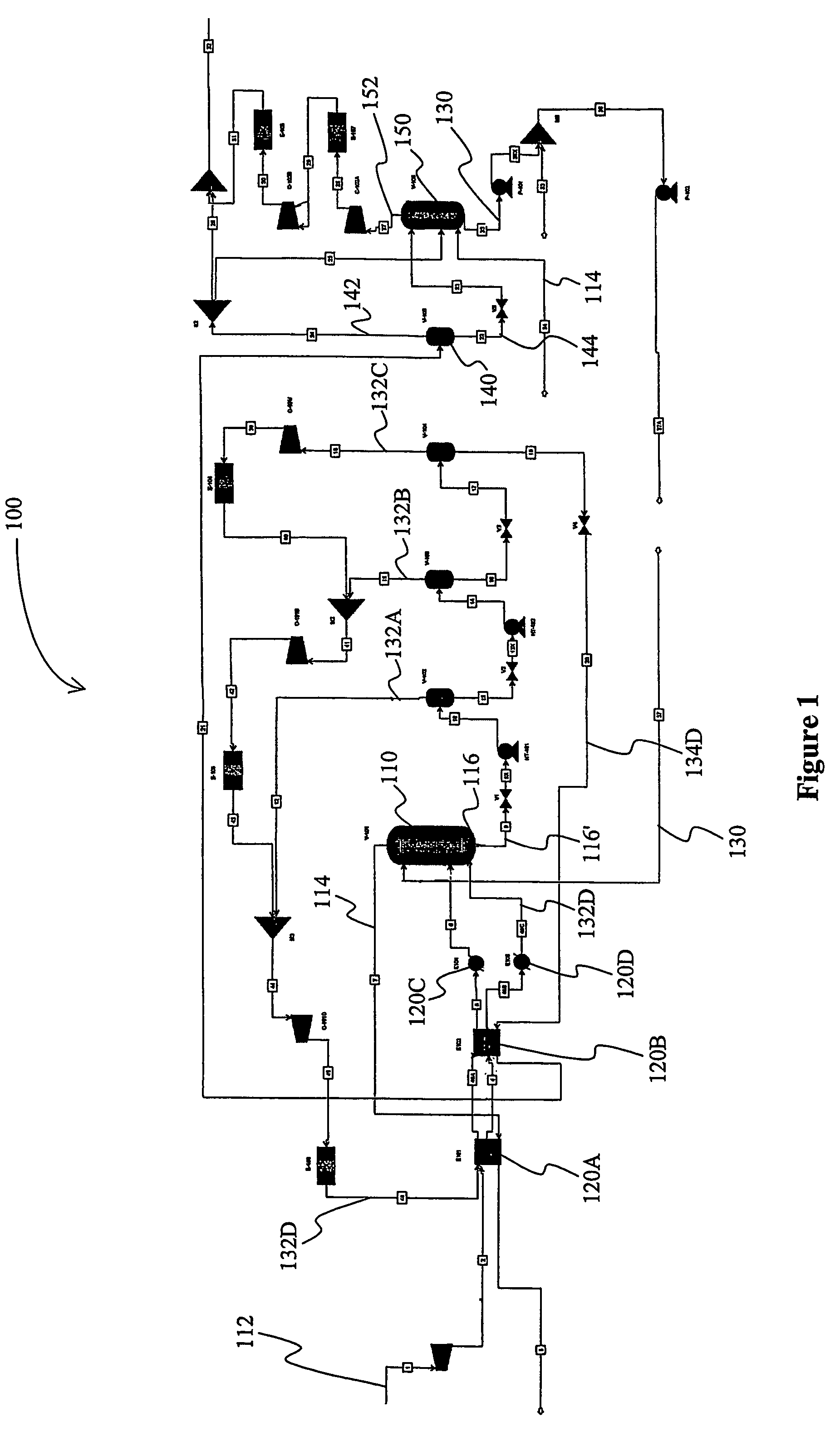Solvent use and regeneration
a technology of solvents and solvents, applied in the field of gas treatment, can solve the problems of reducing the efficiency of the absorption process, and increasing the energy input requirement for cooling, so as to improve the solvent loading and reduce the solvent circulation rate
- Summary
- Abstract
- Description
- Claims
- Application Information
AI Technical Summary
Benefits of technology
Problems solved by technology
Method used
Image
Examples
examples
[0035]A computer simulation was performed on an exemplary gas treatment plant with a configuration substantially as depicted in FIG. 1. In the “Base” case, the feed gas was high-pressure natural gas and was processed at an absorber pressure of about 2500 psig, wherein the absorber had ten equilibrium stages. The vacuum stripper had six equilibrium stages. The gas treatment plant was configured to remove carbon dioxide from about 12 mol % to about 1.5 mol %, and hydrogen sulfide from about 90 ppmv to less than about 4 ppmv at a feed gas flow rate of 1.6 trillion SCFD with about 17000 gpm of lean polypropylene carbonate as physical solvent.
[0036]One modification to this process configuration is referred to in the table below as “Case 1”, which is identical to the Base case, with the exception that the vacuum stripper has four equilibrium stages plus one stage below the feed location of the carbon dioxide rich stripping gas (i.e., the atmospheric flash vapor), wherein a portion of the ...
PUM
| Property | Measurement | Unit |
|---|---|---|
| pressure | aaaaa | aaaaa |
| pressures | aaaaa | aaaaa |
| absorption pressures | aaaaa | aaaaa |
Abstract
Description
Claims
Application Information
 Login to View More
Login to View More - R&D
- Intellectual Property
- Life Sciences
- Materials
- Tech Scout
- Unparalleled Data Quality
- Higher Quality Content
- 60% Fewer Hallucinations
Browse by: Latest US Patents, China's latest patents, Technical Efficacy Thesaurus, Application Domain, Technology Topic, Popular Technical Reports.
© 2025 PatSnap. All rights reserved.Legal|Privacy policy|Modern Slavery Act Transparency Statement|Sitemap|About US| Contact US: help@patsnap.com


